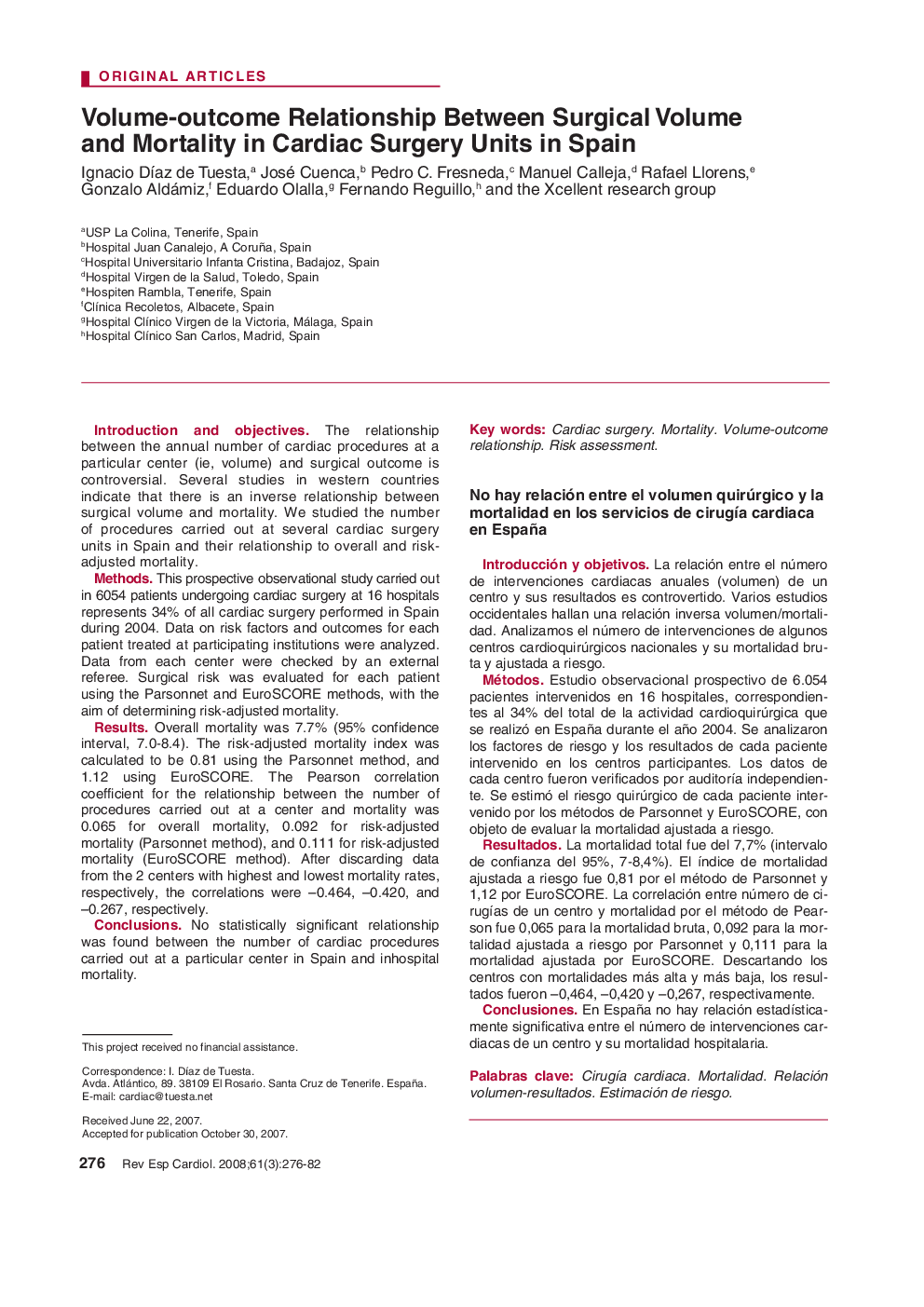| Article ID | Journal | Published Year | Pages | File Type |
|---|---|---|---|---|
| 3018908 | Revista Española de Cardiología (English Edition) | 2008 | 7 Pages |
Introduction and objectivesThe relationship between the annual number of cardiac procedures at a particular center (ie, volume) and surgical outcome is controversial. Several studies in western countries indicate that there is an inverse relationship between surgical volume and mortality. We studied the number of procedures carried out at several cardiac surgery units in Spain and their relationship to overall and risk-adjusted mortality.MethodsThis prospective observational study carried out in 6054 patients undergoing cardiac surgery at 16 hospitals represents 34% of all cardiac surgery performed in Spain during 2004. Data on risk factors and outcomes for each patient treated at participating institutions were analyzed. Data from each center were checked by an external referee. Surgical risk was evaluated for each patient using the Parsonnet and EuroSCORE methods, with the aim of determining risk-adjusted mortality.ResultsOverall mortality was 7.7% (95% confidence interval, 7.0–8.4). The risk-adjusted mortality index was calculated to be 0.81 using the Parsonnet method, and 1.12 using EuroSCORE. The Pearson correlation coefficient for the relationship between the number of procedures carried out at a center and mortality was 0.065 for overall mortality, 0.092 for risk-adjusted mortality (Parsonnet method), and 0.111 for risk-adjusted mortality (EuroSCORE method). After discarding data from the 2 centers with highest and lowest mortality rates, respectively, the correlations were −0.464, −0.420, and −0.267, respectively.ConclusionesNo statistically significant relationship was found between the number of cardiac procedures carried out at a particular center in Spain and inhospital mortality.
Introducción y objetivosLa relación entre el número de intervenciones cardiacas anuales (volumen) de un centro y sus resultados es controvertido. Varios estudios occidentales hallan una relacion inversa volumen/mortalidad. Analizamos el número de intervenciones de algunos centros cardioquirúrgicos nacionales y su mortalidad bruta y ajustada a riesgo.MétodosEstudio observacional prospectivo de 6.054 pacientes intervenidos en 16 hospitales, correspondientes al 34% del total de la actividad cardioquirúrgica que se realizó en España durante el anó 2004. Se analizaron los factores de riesgo y los resultados de cada paciente intervenido en los centros participantes. Los datos de cada centro fueron verificados por auditoría independiente. Se estimó el riesgo quirúrgico de cada paciente intervenido por los métodos de Parsonnet y EuroSCORE, con objeto de evaluar la mortalidad ajustada a riesgo.ResultadosLa mortalidad total fue del 7,7% (intervalo de confianza del 95%, 7-8,4%). El indice de mortalidad ajustada a riesgo fue 0,81 por el método de Parsonnet y 1,12 por EuroSCORE. La correlación entre número de cirugias de un centro y mortalidad por el metodo de Pearson fue 0,065 para la mortalidad bruta, 0,092 para la mortalidad ajustada a riesgo por Parsonnet y 0,111 para la mortalidad ajustada por EuroSCORE. Descartando los centros con mortalidades más alta y más baja, los resultados fueron −0,464, −0,420 y −0,267, respectivamente.ConclusionesEn España no hay relación estadisticamente significativa entre el numero de intervenciones cardiacas de un centro y su mortalidad hospitalaria.
